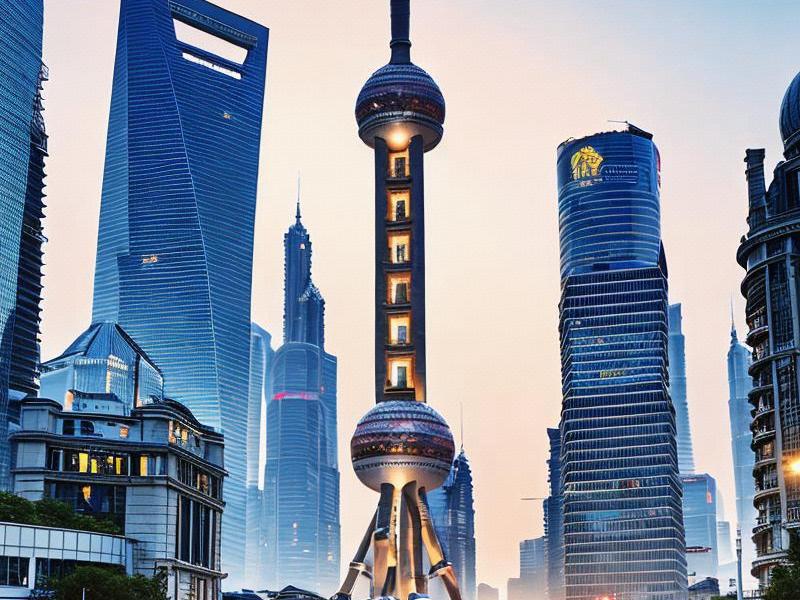This article delves into the multifaceted character of Shanghai, exploring its blend of modern innovation and rich traditional heritage. Situated at the heart of the Yangtze River Delta, Shanghai serves as a beacon of economic progress and cultural preservation, offering a unique perspective on China's rapid urbanization.

Nestled along the banks of the Huangpu River, Shanghai stands as a testament to the dynamic interplay between tradition and modernity. As the largest city in China and a global financial hub, Shanghai is a microcosm of the nation's transformation over the past few decades. Its skyline, dominated by the iconic Oriental Pearl Tower and the futuristic Shanghai Tower, is a visual representation of its status as a city that never sleeps.
The city's history dates back to the 11th century when it was a small fishing village. However, it was during the 19th century that Shanghai began to emerge as a significant port city, thanks to the opening of treaty ports after the First Opium War. This period saw the influx of foreign influences, which left an indelible mark on the city's architecture, culture, and cuisine.
Today, Shanghai is a global metropolis that seamlessly integrates its historical roots with cutting-edge innovation. The Bund, a historic waterfront area, offers a glimpse into the city's colonial past with its array of Art Deco buildings. In stark contrast, the Pudong district showcases the future of urban living with its glass skyscrapers and state-of-the-art infrastructure.
One of the most striking aspects of Shanghai is its ability to preserve its cultural heritage while embracing modernity. The Yu Garden, a classical Chinese garden built in the Ming Dynasty, stands as a serene oasis amidst the bustling cityscape. Similarly, the Shanghai Museum, housed in a former bank building, houses an impressive collection of ancient Chinese art, reflecting the city's deep-rooted cultural significance.
上海龙凤sh419 Shanghai's culinary scene is another area where tradition and innovation converge. From the authentic Shanghainese dishes like Xiaolongbao (soup dumplings) and Shengjianbao (pan-fried buns) to the modern fusion restaurants that blend global flavors, the city offers a gastronomic journey through time. The vibrant night markets and bustling food streets provide an authentic taste of local life, while the high-end dining establishments cater to the tastes of international visitors.
The city's commitment to sustainability and green development is also noteworthy. Initiatives such as the construction of the world's first maglev train line, which connects the city center with Pudong International Airport, demonstrate Shanghai's dedication to reducing carbon emissions. Additionally, the city has invested heavily in renewable energy and green spaces, ensuring a balance between urban growth and environmental preservation.
Shanghai's role in the Yangtze River Delta region further highlights its strategic importance. As the economic engine of China, the Yangtze River Delta is home to some of the country's most prosperous cities, including Suzhou, Hangzhou, and Nanjing. Shanghai serves as the linchpin of this regional network, facilitating trade, investment, and cultural exchange.
The city's ports, including the Port of Shanghai, are among the busiest in the world, handling millions of containers annually. This maritime hub connects China to global markets, making Shanghai a key player in international trade. The development of the Free Trade Zone in Pudong has further solidified Shanghai's position as a gateway to the world, attracting foreign investment and fostering innovation.
上海龙凤419官网
Culturally, Shanghai is a melting pot of diverse influences. The city's art scene is thriving, with galleries, theaters, and music venues showcasing both traditional Chinese art forms and contemporary international works. Festivals such as the Shanghai International Film Festival and the Shanghai Fashion Week attract global attention, highlighting the city's cultural vibrancy.
Education is another area where Shanghai excels. Home to prestigious institutions such as Fudan University and Tongji University, the city is a center of academic excellence. Its commitment to research and development has positioned Shanghai as a leader in science and technology, with advancements in fields such as artificial intelligence, biotechnology, and green energy.
Despite its rapid urbanization, Shanghai remains deeply connected to its rural surroundings. The surrounding provinces of Jiangsu and Zhejiang are known for their rich agricultural heritage and picturesque landscapes. The integration of these rural areas into the urban fabric of Shanghai ensures a balanced development model that benefits both urban and rural populations.
上海花千坊419 The city's transportation network is a marvel of modern engineering, with an extensive metro system, efficient bus services, and a well-connected highway network. The Maglev train and the upcoming high-speed rail link to Beijing further enhance Shanghai's connectivity, making it accessible to travelers from across the country and around the world.
Shanghai's resilience in the face of challenges such as climate change and economic fluctuations is a testament to its adaptability and determination. The city has implemented innovative solutions to address these issues, including smart city technologies and sustainable urban planning.
In conclusion, Shanghai is a city that embodies the spirit of China's transformation. Its ability to blend tradition with innovation, preserve cultural heritage while embracing modernity, and serve as a hub of economic and cultural activity makes it a unique and dynamic destination. As the heart of the Yangtze River Delta, Shanghai continues to shape the future of China and inspire the world with its vision of progress and sustainability.